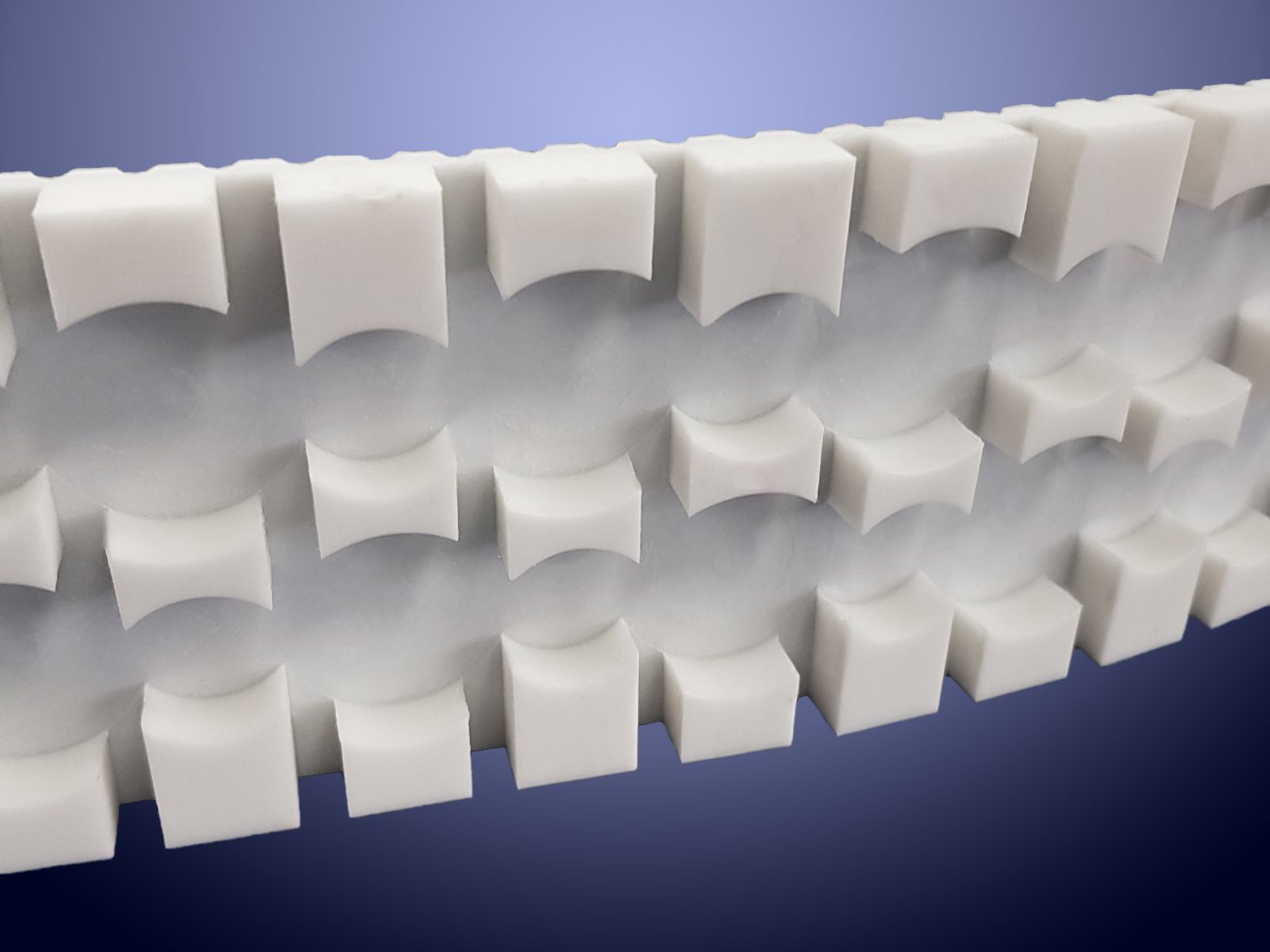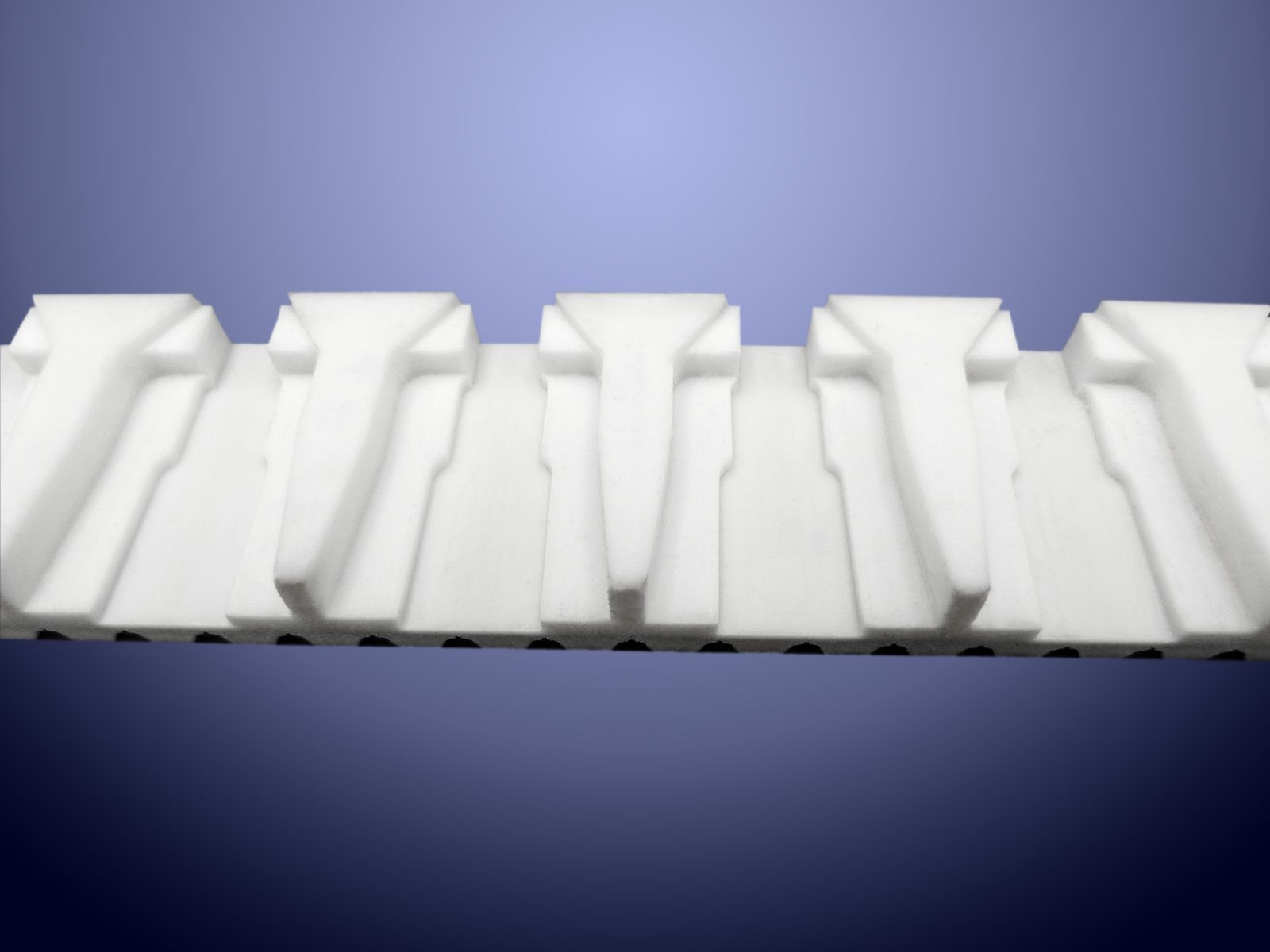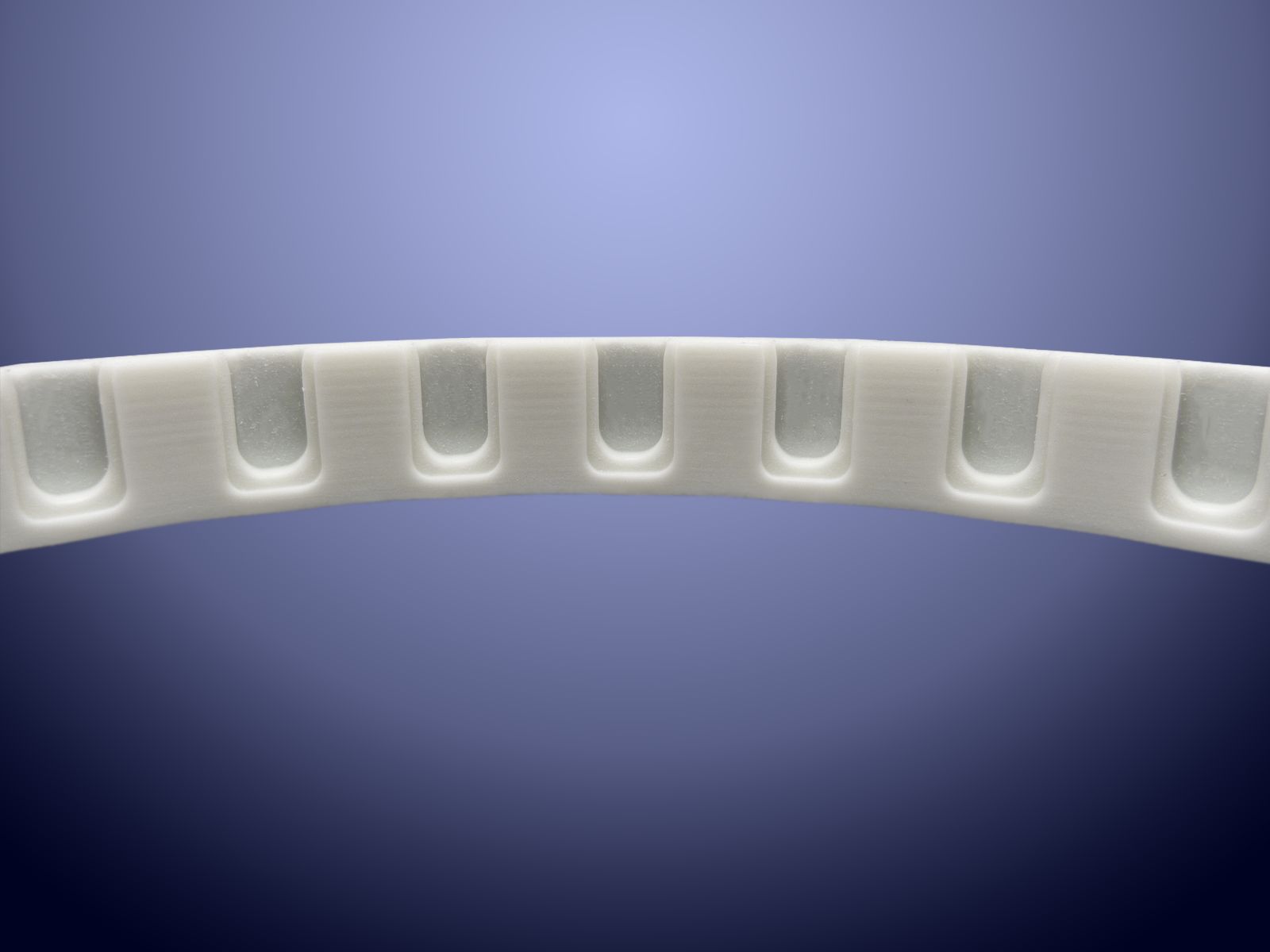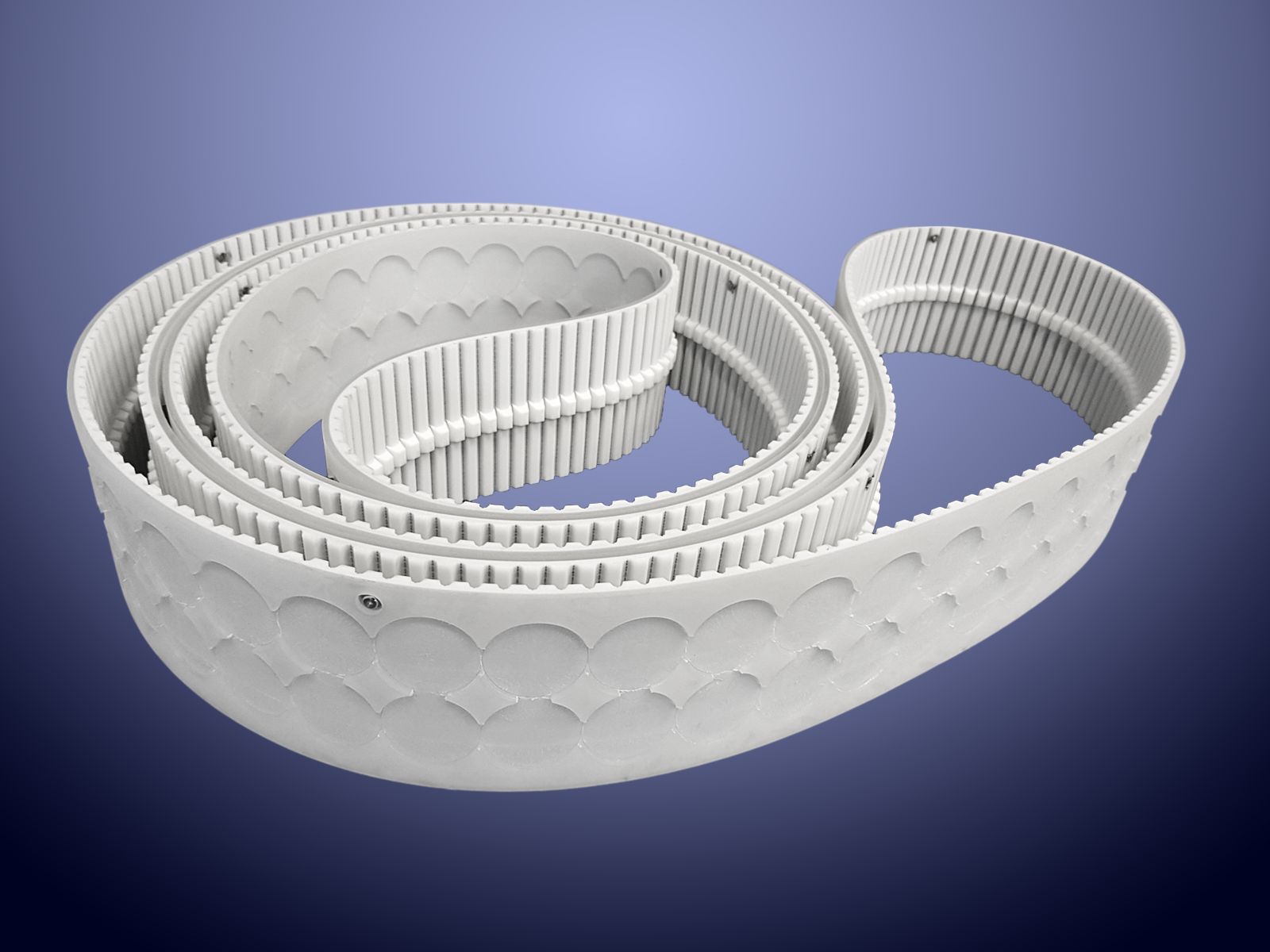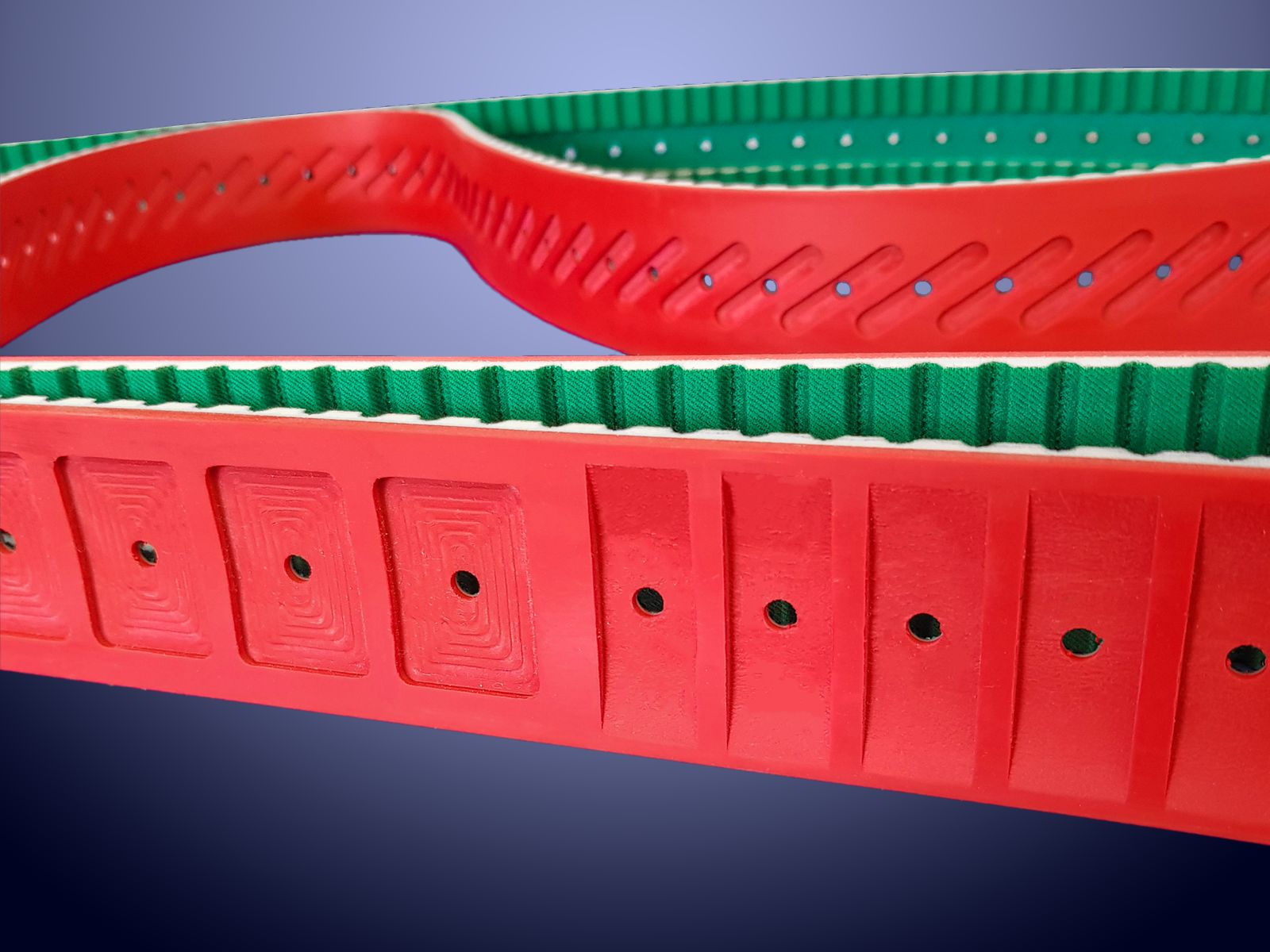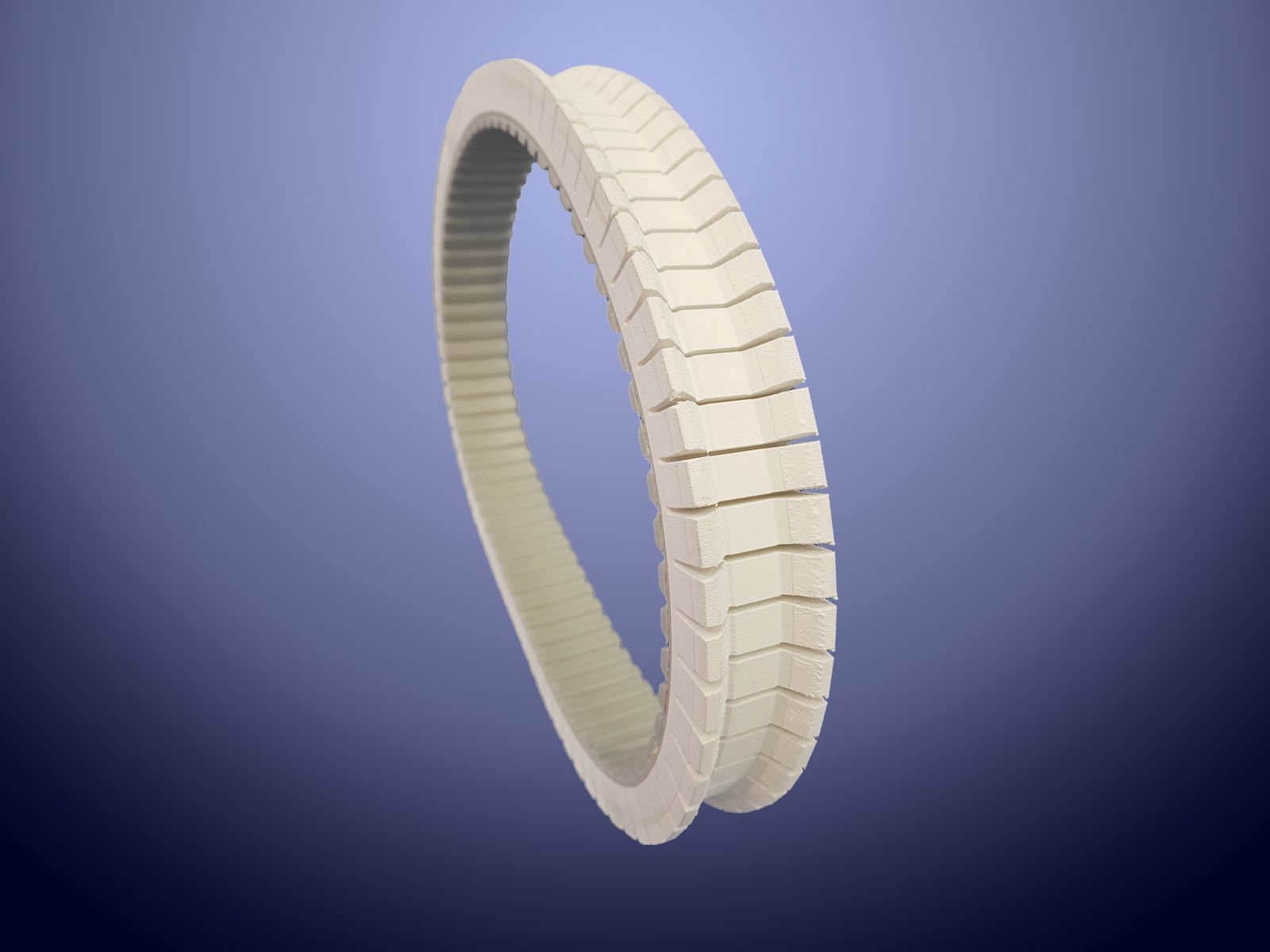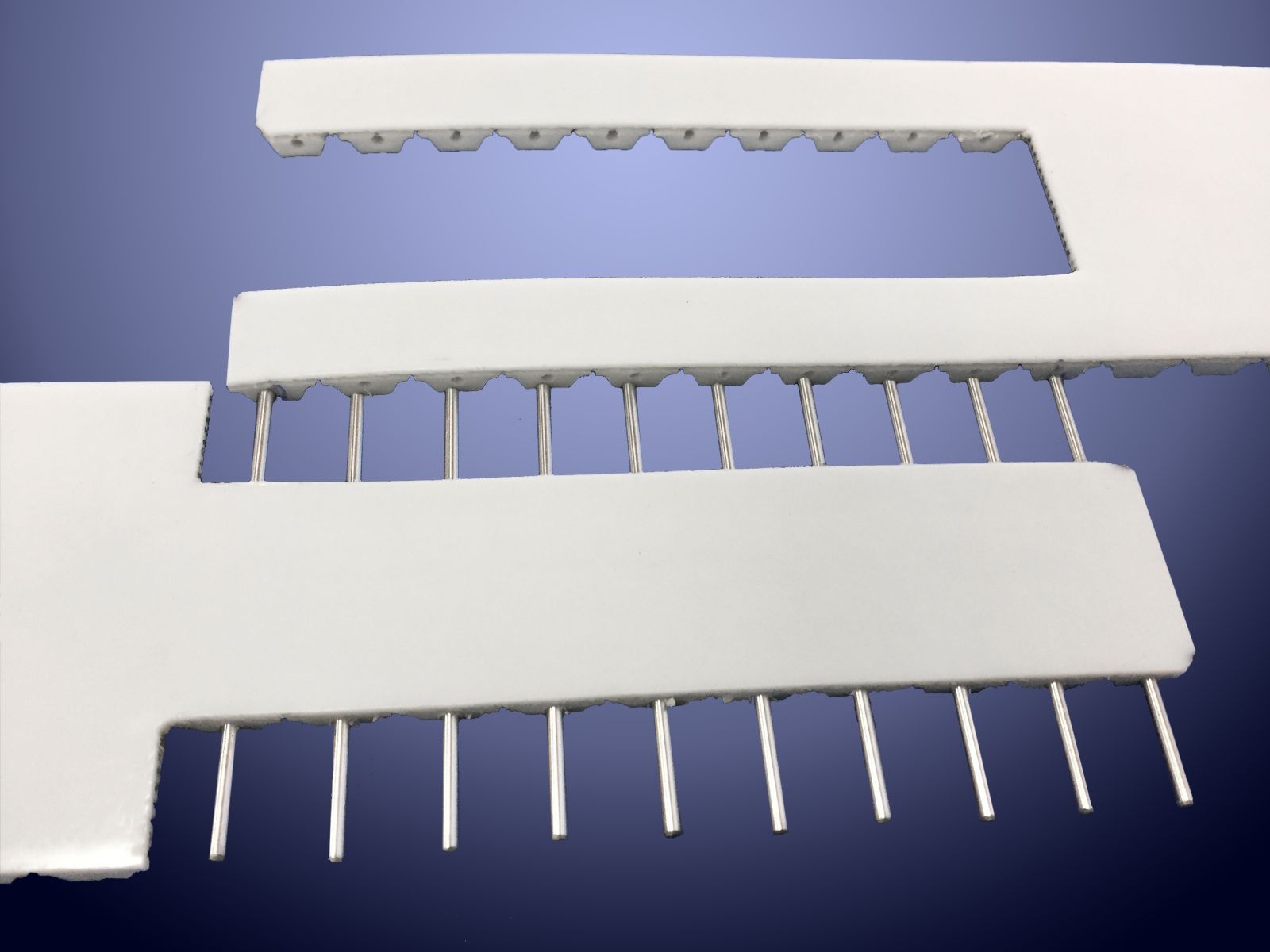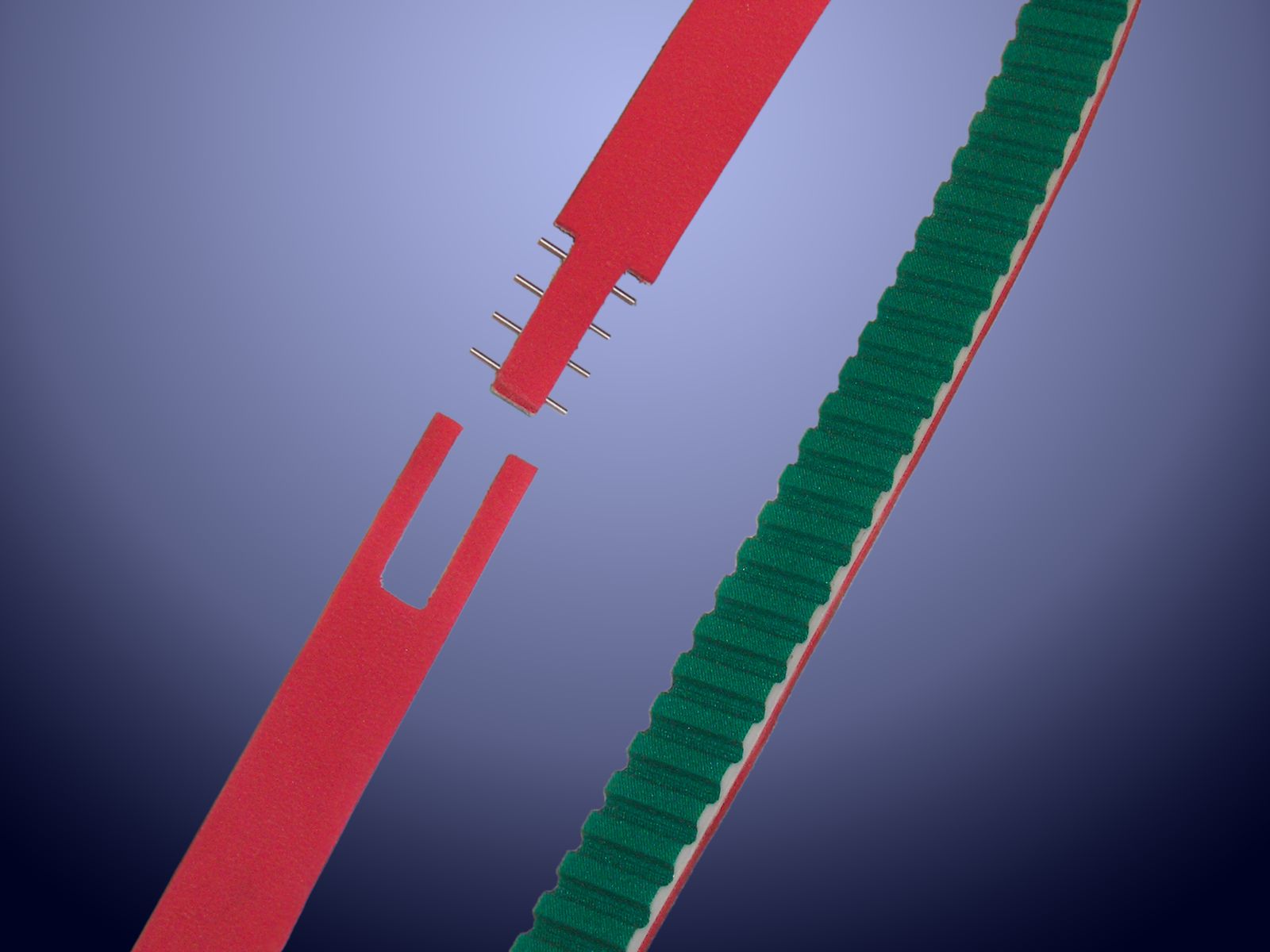
Machining, Joints and Vacuum
on Timing Belts
Our extensive experience allows us to offer all machining which may be required on a timing belt and relative coatings, both dense and foam.
In the automatic machinery sector there are applications where the grip provided by the belt coating is not sufficient to transport the product; in this case, machining can be performed in order to transform the timing belt into a suction (vacuum) system.
More specifically, by creating a channel on the toothed part, perforations and corresponding slots on the coated rear part of the belt, it is possible to apply suction to the product via a vacuum pump.
This type of solution is used primarily for the transport of lightweight materials (film, paper, cardboard boxes, fabric, non-woven fabrics etc.) where, despite the strong acceleration of the system, the product is able to maintain a stable position on the back of the belt.
Geometries very similar to the product to be transported can be created on the rear of the timing belt so that it can be precisely positioned within the compartment created by the machining.
If the goal is to create attachments, on the other hand, milling can be performed transverse to the direction of travel of the timing belt so that the products arrange themselves inside the compartment.
By making longitudinal channels on the coating of the timing belt, it is possible to transport cylindrical objects such as rubber tubing, metal bars, electrical wiring, etc.
As well as joints made by welding, it is also possible to perform machining at the ends of the timing belt in order to obtain a mechanical joint. By creating transverse holes on the teeth and inserting cylindrical pins, a very reliable joint is created with load capacities similar to traditional welded joints.
This solution is widely used for spare part timing belts in order to reduce machine downtime; as the belt is open, it is not necessary to remove any other component, and once positioned the belt is simply closed with the pins.
Mechanical joints can be used on all pitches (AT, T, L, H, XH, HTD, RPP) and all types of timing belt (with attachments, with false teeth, with coatings …)

